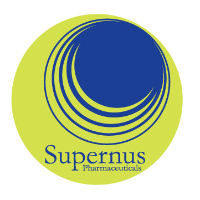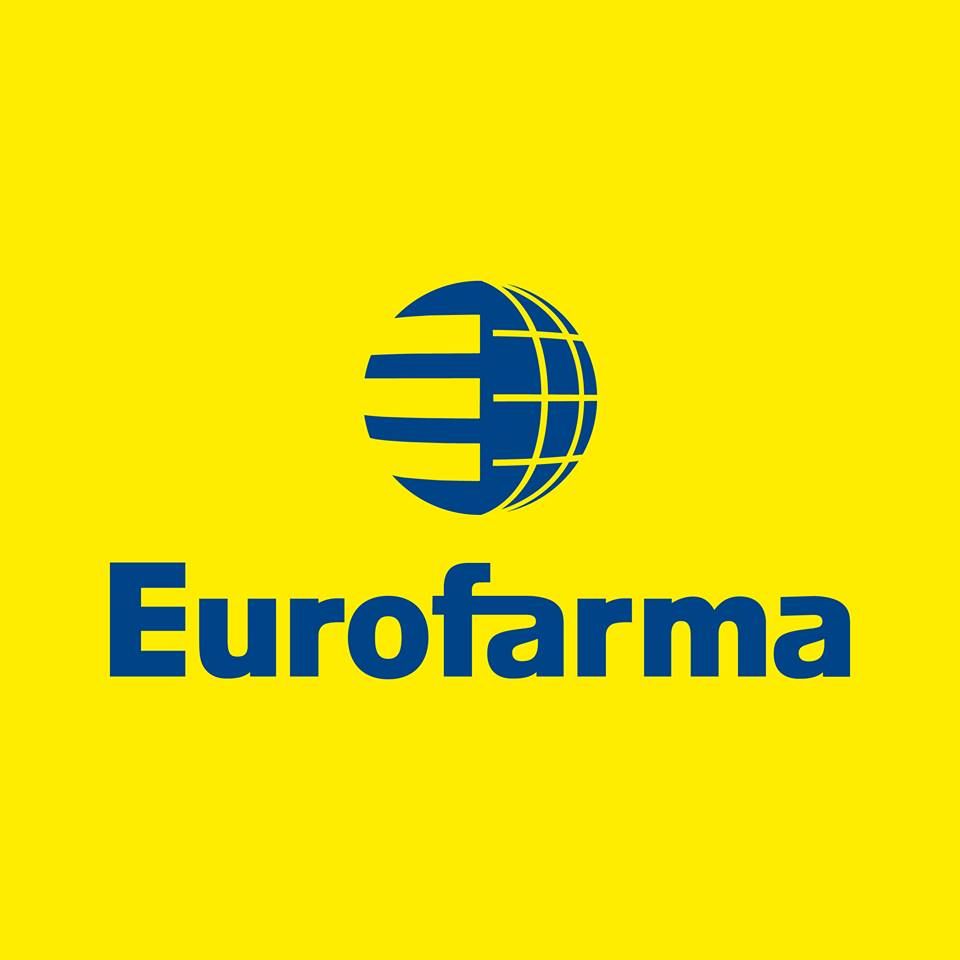预约演示
更新于:2025-05-07
NET
更新于:2025-05-07
基本信息
关联
157
项与 NET 相关的药物作用机制 多巴胺重摄取抑制剂 [+2] |
在研机构 |
原研机构 |
最高研发阶段批准上市 |
首次获批国家/地区 中国 |
首次获批日期2022-11-01 |
作用机制 NET抑制剂 [+1] |
非在研适应症- |
最高研发阶段批准上市 |
首次获批国家/地区 美国 |
首次获批日期2022-06-29 |
靶点 |
作用机制 NET抑制剂 |
在研适应症 |
非在研适应症- |
最高研发阶段批准上市 |
首次获批国家/地区 美国 |
首次获批日期2021-04-02 |
2,998
项与 NET 相关的临床试验NCT05209984
A Phase 3, Randomized, Double-blind, Double-dummy, Parallel-group, Active Drug and Placebo-controlled, Safety, Efficacy and Superiority of Sibutramine IR/topiramate XR in Overweight Adults with Comorbidities/obesity
A phase 3, multicenter, randomized, double-blind, double-dummy, parallel-group, active-drug- and placebo-controlled clinical trial to assess the safety, efficacy and superiority of the new fixed-dose combination sibutramine IR/topyramat XR in weight reduction in overweight adults with comorbidity(ies) or obesity
开始日期2026-04-01 |
申办/合作机构 |
NCT03833206
A Phase I/II Study of PDC-1421 for Treating Depression in Cancer Patients: Part I Dose Escalation
The purpose of this study is to evaluate the safety and the effective doses of PDC-1421 in cancer patients with depression.
开始日期2026-01-15 |
申办/合作机构 BioLite, Inc. [+1] |
NCT06614322
Sensory Phenotyping to Enhance Neuropathic Pain Drug Development (SPENDD): a Randomized, Double-blinded Cross-over Clinical Trial Aimed At Investigating Whether Bedside Quantitative Sensory Testing Can Predict Response to Analgesics.
The goal of this clinical trial is to determine whether quantitative sensory testing (QST) can be used to classify participants into pain sub-groups and predict who will respond best to certain pain treatments in participants with painful peripheral neuropathy.
The analgesic effect is evaluated by measuring pain intensity and Patient Global Impression of Change (PGIC).
This study is a 3-period cross-over trial. This means researchers will compare 3 different drugs (pregabalin, duloxetine, and placebo) over a period of 19 weeks.
Participants will:
* Undergo a quantitative sensory testing (QST) exam.
* Provide a blood sample.
* Complete questionnaires on the computer.
* Take the study drug as instructed.
The analgesic effect is evaluated by measuring pain intensity and Patient Global Impression of Change (PGIC).
This study is a 3-period cross-over trial. This means researchers will compare 3 different drugs (pregabalin, duloxetine, and placebo) over a period of 19 weeks.
Participants will:
* Undergo a quantitative sensory testing (QST) exam.
* Provide a blood sample.
* Complete questionnaires on the computer.
* Take the study drug as instructed.
开始日期2025-09-01 |
申办/合作机构 |
100 项与 NET 相关的临床结果
登录后查看更多信息
100 项与 NET 相关的转化医学
登录后查看更多信息
0 项与 NET 相关的专利(医药)
登录后查看更多信息
5,696
项与 NET 相关的文献(医药)2025-12-31·Annals of Medicine
Inhibition of mPFC norepinephrine improved chronic post-thoracotomy pain in adult rats
Article
作者: Zhang, Fan ; Yu, Rili ; Li, Jin ; Qiu, Weicheng ; Zhou, Yanjun ; Chang, Huan ; Qing, Wenxiang ; Liao, Qin
2025-12-31·Annals of Medicine
Inhibition of 5-hydroxyindoleacetic acid to reduce neutrophil extracellular trap production improves lung condition in chronic obstructive pulmonary disease mice
Article
作者: Dai, Xiaotian ; Li, Wu ; Liang, Cheng ; Xiong, Wei ; Zeng, Qiang ; Zhou, Weijia ; Xue, Lei
2025-12-01·Cognitive Neurodynamics
Unraveling the functional complexity of the locus coeruleus-norepinephrine system: insights from molecular anatomy to neurodynamic modeling
Review
作者: Li, Yanhai ; Zhang, Haiqing ; Li, Youjun ; Naeem, Hadia ; Yao, Nan ; Zhang, Si-Ping ; Yang, Fan ; Su, Chun-Wang ; Huang, Zi-Gang ; Lai, Runchen
148
项与 NET 相关的新闻(医药)2025-05-02
01[68Ga]Ga-FL-031、[225Ac]Ac-FL-031生长抑素受体2(SSTR2)在神经内分泌肿瘤(NET)和小细胞肺癌(SCLC)等实体瘤中高表达,是放射性核素诊疗一体化药物(RDC)的理想靶点。本研究基于自主研发的UniRDC™技术平台开发了新型SSTR2靶向分子FL-031,并系统评估其诊疗同位素[68Ga]Ga/[225Ac]Ac标记物的临床前特性。通过高效液相色谱(radio-HPLC)检测显示,FL-031与68Ga、225Ac的标记放射化学纯度均>98%,比活度分别达18.5 MBq/nmol和185 kBq/nmol,符合诊疗应用标准。在SCLC-21H荷瘤模型中,3.7 MBq [68Ga]Ga-FL-031 PET/CT显像显示给药后1小时和3小时的肿瘤摄取显著高于正常器官(SUVmax=5.2 vs 周围组织<1.8)。体内分布实验证实,[225Ac]Ac-FL-031在AR42J NET模型呈现高效且持久的肿瘤滞留(72小时滞留率>60%ID/g),同时实现正常器官快速清除(48小时肾脏残留<5%ID/g)。更重要的是,37 kBq剂量组在SSTR2阳性模型中展现出显著抑瘤效应(肿瘤体积缩小72%,p<0.001),且未观察到体重下降或血液学毒性。该研究首次证实FL-031诊疗配对在SSTR2阳性肿瘤中兼具精准显像能力([68Ga]Ga-FL-031)与α核素靶向治疗潜力([225Ac]Ac-FL-031),为推进临床转化奠定了重要基础。AACR; Cancer Res 2025;85(8_Suppl_1): nr 583.相关往期链接:PSMA和SSTR2双靶新核药重磅来袭!203/212Pb靶向SSTR2新核药![203/212Pb]Pb-VMT-α-NET的首次临床研究!新核药[68Ga]Ga-DATA5m-LM4的首个临床研究!新核素螯合剂及探针Tb-Crown-TATE!02[68Ga]Ga-R54CXCR4作为趋化因子受体在血液肿瘤及实体瘤转移灶中高表达,是精准诊断与疗效预测的重要靶点。本研究针对现有CXCR4显像剂对实体瘤灵敏度不足的瓶颈,开发了新型PET示踪剂[68Ga]Ga-R54(专利号PCT/EP2020/087792)。在荷瘤裸鼠模型中,皮下移植的NCI-H69(小细胞肺癌)和H460(非小细胞肺癌)肿瘤在注射后1小时均显示特异性摄取(分别为12.2±1%ID/g和2±0.4%ID/g),且通过冷R54竞争实验证实其CXCR4靶向性(摄取分别降低90%和60%)。与[18F]-FDG相比,[68Ga]Ga-R54在H69模型中肿瘤摄取显著更高(12.2±1 vs 3.75±0.6%ID/g, p<0.001)。基于临床前数据,研究者设计了遵循ICH M3(R2)指南的首个人体微剂量临床试验(R4-FOUR-PET,EU CT:2024-513303-14-00)。该单中心、开放性研究计划纳入5-10例CXCR4高表达的晚期实体瘤(包括肺癌、乳腺癌等)患者,重点评估[68Ga]Ga-R54的药代动力学特性,并与[18F]-FDG进行显像对比,同时分析SUVmax与免疫组化CXCR4表达的相关性。GLP毒理实验显示,大鼠静脉注射1000倍临床等效剂量后14天内未见明显毒性,证实其安全性。目前试验已获伦理批准,正在意大利IRCCS-Pascale核医学科开展患者入组。本研究为CXCR4靶向诊疗一体化策略的临床应用提供了关键转化证据。AACR; Cancer Res 2025;85(8_Suppl_1): nr 676.相关往期链接:CXCR4靶向探针99mTc-PentixaTec的首个临床实验!CXCR4靶向PET探针!靶向CXCR4和整合素αvβ3的胰腺癌显像肽异二聚体的研制与评价优化linker减少CXCR4 PET探针的肾脏摄取肿瘤学中的CXCR4靶向诊疗方法03[68Ga]Ga-NNS309、[177Lu]Lu-NNS309成纤维细胞激活蛋白(FAP)在大多数上皮性肿瘤微环境的癌相关成纤维细胞(CAFs)中高表达,而在正常组织中表达受限,成为泛癌种靶向治疗的理想靶点。[177Lu]Lu-NNS309作为一种新型FAP靶向放射性药物,在胰腺导管腺癌(PDAC)和非小细胞肺癌(NSCLC)等临床前模型中显示出显著的肿瘤滞留与抗肿瘤活性。本研究(NCT06562192)为首个人体I期、开放标签、多中心试验,旨在评估[177Lu]Lu-NNS309在PDAC、NSCLC、乳腺癌(BC)及结直肠癌(CRC)患者中的安全性、耐受性及初步疗效。研究分为剂量递增与扩展两阶段。入组标准包括经治的局部晚期或转移性患者,且所有靶病灶(依据RECIST 1.1)需经[68Ga]Ga-NNS309 PET/CT确认显像阳性。剂量递增阶段采用基于EWOC原则的贝叶斯模型指导,综合安全性、耐受性、辐射剂量学及药效学数据确定推荐剂量(RD)。患者接受每周期单次给药,探索6周和4周两种给药方案。剂量扩展计划纳入约20例PDAC、20例NSCLC、30例HR+/HER2- BC(导管型与小叶型各15例)及24例三阴性BC患者。主要终点为安全性评估及RD确立,次要终点包括客观缓解率、药代动力学、肿瘤/器官辐射剂量学及[68Ga]Ga-NNS309显像特性验证。目前研究已启动剂量递增阶段入组,其设计为FAP靶向泛癌治疗策略的临床转化提供了关键范式,未来数据将推动放射性配体疗法在实体瘤中的广泛应用。AACR; Cancer Res 2025;85(8_Suppl_2): nr CT112.相关往期链接:FAP环肽核药[18F]AlF-FAP-NUR与[18F]FDG的头对头对比研究!OncoFAP核药叠叠乐新FAPI核药改善肿瘤剂量和靶本比!恶性胸膜间皮瘤与诊断核药68Ga-FAPI46首个64Cu标记的FAP靶向环肽FIH研究!04[225Ac]Ac-Macropa-(T/P)-PEG6-DM1针对HER2阳性乳腺癌对曲妥珠单抗及T-DM1的耐药难题,本研究开发了α核素偶联药物[225Ac]Ac-Macropa-(曲妥珠+PEG6-DM1)与[225Ac]Ac-Macropa-(帕妥珠+PEG6-DM1),并系统评估其协同疗效。通过构建曲妥珠单抗耐药(HCC1954,HER2高表达)及T-DM1/曲妥珠双耐药(JIMT-1,HER2中表达)小鼠模型,研究显示:抗体-药物偶联物(ADC)联用组在细胞内的内化效率显著高于单药(p<0.0001)。双模态显像([89Zr]Zr-DFO-T-PEG6-DM1 PET/[67Cu]Cu-DOTA-P-PEG6-DM1 SPECT)证实,放射性偶联物(ADR)在荷瘤模型呈现高特异性摄取(HCC1954肿瘤摄取率较非靶组织高8.6倍,JIMT-1高4.3倍)。毒理学评估表明,健康Balb/C小鼠间隔10天分次注射ADC与ADR组合,20天内血液学及生化指标均未出现显著毒性。在HCC1954模型中,ADR治疗组(22天)与ADC组(29天)均实现完全缓解(CR);而在JIMT-1耐药模型中,ADR组治疗60天后肿瘤体积降至11.5±4.4 mm³(3/8 CR),显著优于ADC组(无CR)。机制分析提示,策略通过协同阻断HER2二聚化结构域,增强核素靶向递送效率,并加速非靶组织清除(肝脏残留降低42%)。该研究首次证实α核素标记的抗HER2策略可克服现有靶向治疗耐药,为晚期乳腺癌提供全新解决方案。AACR; Cancer Res 2025;85(8_Suppl_1): nr 581.相关往期链接:蓝纳成新核药[225Ac]Ac-LNC1011正式亮相!212Pb席卷全球核素资本市场,正面宣战王牌核素225Ac,凭什么?212Pb与225Ac(一):核素性质与核资源储备ASCO 2024:225Ac-JNJ-6420临床I期碳酸酐酶Ⅸ(CA9)靶向的225Ac治疗核药!05SADA-PRIT针对恶性阑尾上皮肿瘤(AC)腹膜复发治疗困境,本研究创新性应用自组装-解组装双特异性抗体(SADA)预靶向放射免疫疗法(PRIT),通过靶向GPA33抗原实现α(225Ac)与β(177Lu)核素的高效递送。在皮下(SQ)及腹腔(IP)移植的AC患者来源异种移植(PDX)模型中,α-PRIT组(2×74 kBq 225Ac)与β-PRIT组(3×111 MBq 177Lu)分别将中位生存期(MS)从对照组的21天显著延长至70天和68天(p<0.0001)。尤为突出的是,IP模型中所有α-PRIT治疗小鼠(10/10)在100天观察期内保持无瘤生存,显著优于对照组的MS 42天。毒性分析显示,治疗组仅出现可逆性体重下降(<10%)及短暂白细胞减少(1-2级),组织病理学仅见轻度肾小管变性,未发现剂量限制性毒性。免疫组化证实26例AC样本及4种PDX模型均高表达GPA33、B7H3及HER2,为后续多靶点SADA抗体鸡尾酒疗法克服肿瘤异质性提供了理论依据。该研究首次验证SADA-PRIT在AC中的卓越疗效与安全性,为罕见肿瘤精准放疗开辟了新路径。AACR; Cancer Res 2025;85(8_Suppl_1): nr 2150.相关往期链接:通过[177Lu]Lu-PSMA证明Raion-TLC/HPLC分析的优化、临床实施和比较06[225Ac]Ac-Macropa-MUC-16针对MUC-16(CA125)靶点在80%上皮性卵巢癌(EOC)及65%胰腺导管腺癌(PDAC)中的高表达特性,本研究开发了新型α核素偶联药物[225Ac]Ac-Macropa-MUC-16,并系统评估其疗效与安全性。通过构建MUC-16高/中/低表达的EOC及PDAC患者来源异种移植(PDX)模型,研究显示:在SW1990 PDAC细胞系模型中,两次13 kBq剂量治疗组实现16.67%完全缓解(CR),其余83.33%肿瘤生长抑制≥50天(对照组33天进展至终点)。对于高/中表达MUC-16的PDAC及EOC PDX模型,治疗组CR率达100%,显著优于对照组中位生存期(PDAC 36天,EOC 47天)。低表达EOC模型虽未达CR,但第12天和21天的肿瘤生长抑制率仍达94.5±6.8%和84.7±11%。生物分布研究表明,药物在肿瘤组织滞留时间长达72小时(肝/脾清除半衰期<24小时),OLINDA剂量学模型预估肿瘤吸收剂量达12.5 Gy/MBq。安全性评估显示,两次15 kBq剂量虽引起轻度肝脾病理改变,但血液学及生化指标未见异常。该研究首次证实MUC-16表达水平是α靶向疗效的关键预测因子,为CA125阳性肿瘤的精准治疗提供了重要依据。AACR; Cancer Res 2025;85(8_Suppl_1):Abstract nr 567.相关往期链接:卵巢癌诊疗核药huAR9.607[161Tb]Tb-DOTA-N4MU01Nectin-4作为钙离子非依赖性的免疫球蛋白样细胞黏附分子,在三阴性乳腺癌(TNBC)及非小细胞肺癌(NSCLC)中异常高表达。本研究首次报道了161Tb标记的抗Nectin-4抗体([161Tb]Tb-DOTA-N4MU01)在TNBC及NSCLC模型中的诊疗潜力。通过稳定转染构建Nectin-4高表达的小鼠同源TNBC(4T1.Nectin-4、E0771.Nectin-4)及NSCLC(LLC.Nectin-4、CMT167.Nectin-4)细胞系,验证抗体结合亲和力(≤11 nM)及内化效率(流式细胞术与活细胞成像证实DOTA偶联不影响内化活性,p>0.999)。161Tb标记率达95%以上,药代动力学显示其血浆清除半衰期为120±20小时。在荷瘤模型中,SPECT/CT显像显示CMT167.Nectin-4与4T1.Nectin-4肿瘤在给药24小时后肿瘤/肌肉摄取比值分别达7.7和6.7。疗效实验表明:对于免疫检查点阻断疗法(ICBT)耐药的4T1.Nectin-4模型,2×5 MBq剂量组实现20%完全缓解(CR),中位生存期显著优于对照组(p≤0.0021);而抗PD-L1单药组无显著疗效(p=0.1166)。在侵袭性E0771.Nectin-4、CMT167.Nectin-4、LLC.Nectin-4及人源MDA-MB-468模型中,2×5 MBq剂量组均表现出显著肿瘤抑制(p≤0.0017-0.0316)及生存获益。安全性评估显示,两次5 MBq给药后28天内未观察到血液学或生化毒性。该研究首次证实161Tb标记的Nectin-4靶向疗法可克服ICBT耐药,为TNBC及NSCLC提供了新型诊疗一体化策略。AACR; Cancer Res 2025;85(8_Suppl_1): nr 584.AACR; 相关往期链接:Nectin-4靶向新核药:68Ga-FZ-NR-1的临床首秀!Nectin-4的PET新探针首次人体研究重磅来袭!靶向Nectin-4 ADC药物欧洲获批上市161Tb-AMTG 和 177Lu-AMTG的对比研究JNM:161Tb标记的PSMA核药重磅来袭!08[[177Lu]Lu-PSMA-I&T本研究通过构建RM1-PGLS去势抵抗性前列腺癌(PSMA稳定转染小鼠模型)同源移植瘤模型,首次揭示[177Lu]Lu-PSMA-I&T核素治疗诱导的免疫应答特征。荷瘤C57BL/6小鼠接受单次60 MBq [[177Lu]Lu-PSMA-I&T或5 Gy外照射(EBRT)后第7天,NanoString PanCancer免疫组学分析显示:核素治疗组显著激活109个差异表达基因(DEGs),其中98.2%呈上调趋势。单样本基因集富集分析(ssGSEA)鉴定出24条免疫相关通路活化,包括I型干扰素信号(NES=2.3)、抗原提呈(NES=2.1)及NK细胞介导细胞毒性(NES=1.9)等关键通路。免疫浸润分析显示巨噬细胞(p=0.004)、中性粒细胞(p=0.008)及CD56dim NK细胞(p=0.012)显著增加。核心发现聚焦于趋化因子Cxcl10的枢纽作用——在核素治疗组(log2FC=2.1, p=0.0059)与EBRT组(log2FC=2.3, p=0.0025)均呈现最显著上调。蛋白质互作网络分析显示,Cxcl10在两组分别以71(第1位)和124(第3位)条互作边数成为核心节点,调控包括STAT1、IRF7等关键免疫分子。体外实验证实,RM1-PGLS细胞经1.2 MBq/ml [[177Lu]Lu-PSMA-I&T(等效5 Gy照射)处理后,Cxcl10 mRNA表达于第7天达峰值(较基线升高4.1倍,p<0.001),而蛋白分泌峰出现在第2天(ELISA检测浓度提升3.8倍,p<0.05),第4-6天恢复基线水平。该发现提示肿瘤细胞具有独立于免疫微环境的Cxcl10分泌能力。本研究阐明[[177Lu]Lu-PSMA-I&T通过激活Cxcl10为核心的免疫网络重塑肿瘤微环境,为联合免疫检查点抑制剂等策略提供了分子机制层面的理论支撑。Cancer Res 2025;85(8_Suppl_1): nr 591.相关往期链接:19F/177Lu-rhPSMA-7.3和177Lu-PSMA I&T的较量!PET成像核素133La:225Ac和135La治疗类核素的soul mate!首个133La-PSMA-I&T!首次人体临床前评估:89Zr标记的PSMA-617和PSMA-I&T的药代动力学、PET成像和剂量测定。09[68Ga]Ga、[177Lu]Lu-BCY25286膜型基质金属蛋白酶1(MT1-MMP)作为肿瘤侵袭转移的关键调控因子,在非小细胞肺癌、膀胱癌等多种恶性肿瘤中高表达且与不良预后相关。本研究基于噬菌体展示技术开发了MT1-MMP特异性双环肽BCY25286,并实现其诊疗同位素标记(68Ga/177Lu)。临床前研究显示,[68Ga]Ga-BCY25286标记纯度>99%,对MT1-MMP具有高亲和力(7.2±1.6 nM)及72小时酶解稳定性。在荷瘤(MT1-MMP+ HT1080)裸鼠模型中,该示踪剂1小时肿瘤摄取达10.6±1.1%ID/g,肿瘤/肌肉比值为8.3,显著优于MT1-MMP阴性模型(p<0.001)。首个人体应用案例为65岁晚期肺腺癌患者,[68Ga]Ga-BCY25286 PET/CT显像(同情用药)显示原发灶及转移灶(经活检证实)均呈高摄取,与[18F]FDG显像结果高度一致。值得注意的是,骨转移灶SUVmax值较[18F]FDG提高42%(9.8 vs 6.9),而淋巴结转移灶摄取相当(SUVmax=6.2 vs 6.0)。药代动力学显示示踪剂主要通过肾脏排泄,60分钟时肾脏滞留量为15.3%ID/g。该研究首次证实MT1-MMP靶向显像在临床中的可行性,为基于该靶点的精准诊疗策略提供了关键转化证据。AACR; Cancer Res 2025;85(8_Suppl_1):Abstract nr 4601.相关往期链接:双环肽偶联物BT8009类似物:DOTA conjugated bicycle peptides叠加线粒体毒性的新PSMA靶向核药!非内化的ADC抗体药物偶联物!针对肿瘤微环境的放射性核素诊疗综述:针对多种癌症的个性化治疗方法10225Ac-SSO110SSO110(DOTA-JR11)作为生长抑素受体2(SSTR2)拮抗剂,相较于激动剂DOTATATE具有更高的靶点结合位点覆盖率和更长的肿瘤滞留时间,在临床前研究中展现出显著治疗优势。本研究系统评估了SSO110标记不同放射性核素(225Ac、212Pb、161Tb、177Lu)在SCLC(NCI-H69模型)及胰腺癌(AR42J模型)中的疗效差异。在NCI-H69 SCLC模型中,单次给药225Ac-SSO110(30 kBq,相当于人体剂量7.3 MBq)即可诱导肿瘤完全缓解(CR)及长期生存,显著优于225Ac-DOTATATE(42 kBq组中位生存期33天,p<0.001)。177Lu-SSO110(20 MBq)与161Tb-SSO110(20 MBq)虽有效,但均未达到CR。值得注意的是,212Pb-SSO110因SSO110长半衰期(>7天)与短半衰期核素(212Pb T1/2=10.6小时)匹配不佳,疗效不及177Lu-SSO110。在AR42J胰腺癌模型中,225Ac-SSO110(37 kBq)实现100%生存率,组织病理显示肿瘤细胞有丝分裂指数降低85%、坏死区域增加3倍,而同等剂量225Ac-DOTATATE组中位生存仅33天。机制分析揭示,SSO110的长效肿瘤滞留特性与长半衰期核素(如225Ac T1/2=9.92天)形成协同效应,使肿瘤吸收剂量提升2.4倍。基于177Lu-SSO110的LuSato1临床试验积极数据及225Ac-SSO110的卓越临床前活性,全球多中心I/II期试验(针对广泛期SCLC及Merkel细胞癌)已启动,旨在探索α核素靶向治疗与免疫检查点抑制剂的联合潜力。AACR; Cancer Res 2025;85(8_Suppl_1):Abstract nr 575.小核始终秉持客观中立原则,不发布主观评述或倾向性引导,内容严格援引公开信源,建议读者结合原文及多方信息祛魅思考,独立研判。●笔记:核药在ADC巨头第一三共研发进程中扮演的角色●Richard Zimmermann与Thomas Beyer共话核药行业格局●新型99mTc标探针用于黑色素瘤显像●Dr. Simone Krebs最新JNM:IL13Rα2靶向的免疫PET显像声明:本文观点仅代表小核本人,视角局限,欢迎批评指正;如需转载,请务必注明文章作者和来源。如有其它问题,请在本平台留言或联系xiaoheshuoheyao777@163.com,小核将在第一时间处理。内容编辑 | 小核排版设计 | 小核媒体合作 | 科研宣传 | 转载开白xiaoheshuoheyao777(小核微信)
AACR会议
2025-04-30
·梅斯医学
今年48岁的赵先生,最近1个月总是感觉到腹痛,因腹痛加重来到医院就诊。肠镜发现直肠有隆起病变,可见一大小0.8*0.9cm隆起,表面光滑。经过行内镜下黏膜剥离术(ESD),病理确诊为神经内分泌肿瘤(NET,G1)。图1HE:肿瘤细胞排列呈巢状、条带状及小梁状分布,细胞大小较一致,圆形核和细腻的染色质。图2免疫组化:突触素(Syn)阳性。它离我们并不遥远神经内分泌肿瘤(neuroendocrine neoplasm,NEN)这是一类起源于肽能神经元和神经内分泌细胞的实体肿瘤。也许你对神经内分泌肿瘤一头雾水,不但没听说过,甚至会错误地认为神经和内分泌得了肿瘤?事实上,苹果前CEO乔布斯和知名演员赫本,也是因患上了这种罕见肿瘤去世的,神经内分泌肿瘤并不遥远。发病率明显上升神经内分泌瘤是罕见病,约占所有恶性肿瘤的2%左右,欧美人群的神经内分泌肿瘤的发病率大在2.5~5人/10万人,在过去30年内发病率增加了5倍,相比其他肿瘤,神经内分泌肿瘤发病率的增加更加迅速。国内外研究数据均提示,NENs的发病率在不断上升。美国流行病学调查结果显示,与其他类型肿瘤相比,NENs发病率上升趋势更为显著,在1973-2012年40年间,发病率增加了6.4倍,达到6.98/10万人年,亚洲人群中发病率约0.11~2.20 /10 万人年。遍布全身神经内分泌肿瘤(neuroendocrine neoplasm,NEN)从字面上就可以大概知道,这是一类起源于肽能神经元和神经内分泌细胞的实体肿瘤。由于神经内分泌细胞遍布全身各处,特别是广泛分布于消化系统和呼吸系统,所以可发生在除指甲趾甲、毛发除外的体内任何部位,最常见的是胃、肠、胰腺等消化系统神经内分泌肿瘤(约占所有神经内分泌肿瘤的2/3,60%-70%左右),其次是肺支气管神经内分泌肿瘤(约20%-30%左右),另有少数发生在肾上腺、胸腺、甲状腺等部位。根据WHO(世界卫生组织) 整体命名方案,所有来自于神经内分泌细胞和组织发生的肿瘤,都命名为神经内分泌肿瘤。而神经内分泌肿瘤中99%都是恶性,可能发生的区域几乎涵盖了所有的器官。从神经系统里面的垂体、内分泌器官的甲状腺、甲状旁腺到胰腺中的胰岛、消化道中的内分泌细胞等都被纳入进神经内分泌肿瘤的概念中。这些神经内分泌肿瘤只有当恶性程度非常高、分化非常差的时候才命名为“神经内分泌癌”。而分化较好的一部分,仍然以“神经内分泌肿瘤”来命名。这一部分分化较好的瘤又会根据增殖的情况来分级,分成G1、G2甚至G3。但它们仍然还是属于恶性肿瘤的范畴。临床表现多样由于肽能神经元和神经内分泌细胞可合成、分泌、储存多种生物活性胺、小分子多肽或激素等,所以产生各种千奇百怪的多样化的症状表现,常不典型。患者主要表现为压迫症状、神经内分泌症状和转移引起症状。症状轻时无明显症状,重时可出现代谢紊乱,甚至危及生命。(一)典型症状神经内分泌肿瘤的典型症状可分为压迫症状、神经内分泌症状和转移引起症状三大类。1、压迫症状(1)局部肿块:肿瘤生长较大可在原发灶或转移灶触及肿块。(2)非特异性消化道症状(消化道肿瘤):腹痛、恶心、呕吐、黄疽、肠梗阻、消化道出血等。(3)非特异性呼吸系统症状(呼吸道肿瘤):咳嗽、咳痰、吞咽困难(压迫食道)气促、呼吸困难(压迫支气管)等。(4)非特异性泌尿道症状:排尿困难、无痛性肉眼尿血等。(5)垂体压迫症状:表现为头痛、视物模糊、视野缺损、失明等。2、神经内分泌症状(1)卓-艾综合征(2)惠普尔(Wipple)三联征(3)库欣综合征(4)肌无力综合征(5)抗利尿激素分泌异常综合征(6)醛固酮增多症3、转移症状(1)脑转移:头晕头痛、呕心呕吐、癫痫、肢体运动障碍等。(2)肝转移:黄疸、腹水、全身瘀点、瘀斑等。(3)肺转移:咳嗽、咳痰、气促、呼吸困难等。(4)骨转移:骨转移部位疼痛、病理性骨折等。(二)部分类型肿瘤典型症状1、胰高血糖素瘤:游走性坏死性红斑、糖耐量受损、体重下降等。2、生长抑素瘤:糖尿病和/或低血糖、胆石症、脂肪性腹泻等。3、血管活性肠肽瘤:严重水样腹泻、脱水、低钾血症、胃酸缺乏或胃酸过少。4、Ⅰ型胃神经内分泌瘤:表现为自身免疫性萎缩性胃炎,胃酸缺乏、缺铁性或巨幼红细胞性贫血,胃镜下可见黏膜下多发息肉或黏膜肿物。5、Ⅱ型胃神经内分泌瘤:胃底体黏膜广泛肥厚、水肿、溃疡及糜烂,多发性消化道溃疡。(三)其他症状1、神经系统病变小脑皮质变性、周围神经病(感觉或运动)、肌无力等神经系统病变,肿瘤经治疗后消失或缓解时,其肌无力症状也随之缓解。2、黑棘皮病3、皮肌炎4、骨关节增生5、弥散性血管内凝血6、皮肤色素沉着7、性激素分泌异常8、生长激素分泌异常9、促甲状腺激素分泌异常诊断根据相应的临床表现,肿瘤标记物检测,影像学检查及病理学检查进行神经内分泌肿瘤的诊断。完整的诊断内容包括肿瘤部位、分级、分期以及功能状态。胃肠胰是NEN最常发生的部位,约占所有NEN的55%-70%。胃肠胰NEN的诊断是基于临床症状、激素水平、各种影像学检查以及组织病理学证实。应采取实验室检查、定位诊断的方法明确,确诊依靠或组织检查或手术组织病理检查。实验室检查:CgA、肽类激素测定、激发实验定位诊断:CT、MRI、SSRS病理检查:细针穿刺、活组织检查、术后病理诊断按照肿瘤的增殖活性将胃肠胰神经内分泌肿瘤分级为:G1、G2、G3。治疗神经内分泌肿瘤的治疗方式多样,包括内镜、外科、内科、核素、介入、化疗、中医、姑息治疗和心理治疗,多学科整合诊疗可以给予患者个体化的治疗方案。选择何种治疗手段,取决于肿瘤的分级、分期、发生部位以及是否具有分泌激素的功能。参考资料1、毛歆歆,陈杰 2022版WHO神经内分泌肿瘤分类解读 中华病理学杂志, 2024,53(7) : 655-659.2、中国临床肿瘤学会神经内分泌肿瘤专家委员会 中国胃肠神经内分泌肿瘤专家共识(2019年版)3、陈旻湖等,消化病学,人民卫生出版社,第一版,2019:930~9434、李洁等,胰腺和胃肠道来源神经内分泌肿瘤分类-2018 ARC/WHO分类框架共识解读,肿瘤综合治疗电子杂志,2018,4(4):16~205、中国抗癌协会神经内分泌肿瘤整合诊治指南 中国肿瘤临床来源 | 梅斯医学编辑 | 素碧神经系统罕见病交流群↓点击下方“阅读原文”,下载梅斯医学APP吧!
2025-04-30
·药智网
一个新的百亿美元药物市场正在形成。Precedence Research发布的报告显示,2024年全球放射性药物市场规模为67.4亿美元,预计到2033年,这个数字将以8.2%的复合增长率,达到136.7亿美元。图片来源:同写意虽然该赛道涌现出一批Biotech,凭借创新的技术和管线,正把这种先进疗法带向更广阔的应用市场,可最后的故事不太可能由它们来主导——以诺华、拜耳为代表的制药巨头环伺左右,摩拳擦掌。过去几年,资金越发频繁地流向这片蓝海:不仅是风投机构,还包括来自药企的钱。MNC通过参与Biotech的融资,或者直接引进管线,买下公司,深度参与到这场创新竞赛里。由此,行业格局似乎也逐渐呼之欲出。下文,将梳理五家制药巨头在放射性药物上的布局。它们采取各种策略,希望建立起自己的话语权。1拜耳:先驱不易作为最早一批押注放射性药物的MNC,拜耳2009年就与Algeta达成合作,获得Xofigo的全球独家销售权。Xofigo不包含靶向部分。相反,该药物利用镭的化学性质,使其能够与骨矿物质结合,从而帮助将药物定位到骨周转率高的部位。2013年,FDA批准Xofigo上市,作为全球首款α粒子放射性药物,用于治疗晚期骨转移型去势抵抗性前列腺癌。次年,拜耳顺势斥资29亿美元并购Algeta,完全将Xofigo收入囊中。通过这次收购,拜耳希望借此提振其药物部门。Algeta曾预计,到2018年,Xofigo全球销售额将超过10亿美元,但事实上,它在2017年达到的峰值是4.08亿美元。问题出在临床数据。2017年底,拜耳公布Xofigo与强生的Zytiga、类固醇联合使用的III期出现死亡和骨折事件后,该药物的销售额一直在下降。拜耳2024年财报并未披露Xofigo的销售额。GlobalData预计,Xofigo在2024年的销售收入仅为2.44亿美元,到2030年将降至1.61亿美元。不过,这家巨头正试图重铸自己的荣光。2021年,拜耳收购Noria Therapeutics和PSMA Therapeutics,获得一款靶向PSMA的小分子α粒子疗法的开发权益,进一步扩展其靶向α疗法的肿瘤学产品组合。2023年,通过战略合作,拜耳以4500万美元的预付款和高达17亿美元的里程碑付款,从Bicycle Therapeutics获得专有肽的使用权,计划将之用于开发针对几种未公开的癌症靶点的靶向放射疗法。根据其管线信息,拜耳至少有两种临床阶段的放射性药物正在开发中:225Ac-Pelgifatamab和225Ac-PSMA-Trillium,这两种都是针对晚期前列腺癌的早期研究中的候选药物。2诺华:一骑绝尘有目共睹,当前在放射性药物领域最为成功的MNC,非诺华莫属。跟拜耳相似,这家瑞士制药商通过并购快速建立起自己的版图:2017年,以39亿美元收购的Advanced Accelerator Applications,获得Lutathera——2024年营收同比增长20%,达到7.24亿美元;2018年,以21亿美元收购Endocyte,获得Pluvicto——2024年营收同比增长42%,达到13.92亿美元。Pluvicto以及即将突破“重磅炸弹”门槛的Lutathera证明,监管、制造复杂的放射性药物,同样有自己的广阔市场前景。诺华放射性配体治疗实体瘤战略副总裁Geoff Towle认为,与竞争对手相比,诺华在全球范围内建设了“行业领先的放射性配体研究和生产基地”。这一定程度促成其商业化产品飞速放量。尽管遥遥领先,诺华仍在持续投资放射性药物领域,加强自己的管线组合。2024年,该公司斥资10亿美元收购Mariana Oncology及其前景看好的产品线,其中最有潜力的产品线是MC-339,这是一种正在研究用于治疗小细胞肺癌的放射性疗法。Towle透露,诺华最近还启动了下一代放射疗法AAA817的两项关键试验,用于治疗前列腺癌。与Pluvicto一样,AAA817靶向PSMA,但携带的是基于锕的有效载荷,可以提供更高的效力。除了拓展产品线,另一大被诺华采用的策略,是扩大商业化产品的适应症。例如,3月底,诺华赢得FDA对Pluvicto的关键批准,使该药的潜在患者人数增加三倍,允许其在紫杉烷类化疗之前治疗PSMA阳性转移性去势抵抗性前列腺癌(mCRPC)。诺华介绍,化疗前mCRPC是Pluvicto实现50亿美元峰值销售额的最重要的适应症。现阶段,诺华还在尝试将放射性药物从前列腺和神经内分泌肿瘤,推向患者需求尚未得到满足的其他领域,例如乳腺癌和肺癌。3阿斯利康:抗癌新篇肿瘤治疗业务长期是阿斯利康的“现金牛”。2024年,该板块营收同比增长24%,达到223.53亿美元,占据阿斯利康总营收的41%。而随着产品的迭代,放射性疗法逐渐进入这家英国制药巨头的视野。它透露,核素偶联药物(RDC)已经成为公司肿瘤学研发战略的重要组成部分,也是多元化产品组合的关键——预计RDC将在2030年之后成为阿斯利康业务的强大推动力。2024年,阿斯利康以高达24亿美元收购Fusion Pharmaceuticals,正是进入放射性药物市场。Fusion为其带来了一款候选药物FPI-2265。阿斯利康生物工程和肿瘤靶点发现高级副总裁Puja Sapra透露,FPI-2265针对PSMA阳性mCRPC患者的II/III期试验,预计在2025年下半年获得读数。不过,距离获批上市可能尚需时日。GlobalData认为,该疗法最早将于2028年商业化,到2030年的销售收入也仅为1.82亿美元。阿斯利康还在研究AZD2068,这同样是Fusion开发的另一种RDC,旨在靶向表达EGFR和cMET标记的细胞。目前,AZD2068正处于针对晚期实体肿瘤的I期临床。根据管线规划,预计该研究最早在2026年就会有结果。产品管线之外,阿斯利康也对“分子成像和计算病理学”饶有兴趣。Sapra表示,这将“增强放射性结合物的输送和监测”,最终目标是“为正确的患者提供正确的治疗”。4BMS:锕系先锋诺华的重磅产品虽然正在跑马圈地,但并非没有薄弱环节。例如,Pluvicto、Lutathera选择镥-177这种β核素放射性同位素,就没有α粒子那样能提供更高的能力——比β粒子高400倍,进而引起更频繁的双链DNA断裂,实现高效、精确杀灭肿瘤细胞。理论上,利用锕-225的放射性药物,有可能比已经批准的Lutathera带来更佳的疗效。BMS正着手打造自己的锕系元素产品矩阵。2023年,BMS以41亿美元收购了RayzeBio及其基于锕-225的平台,在放射性药物赛道迈出重大一步。虽然成立时间尚短,RayzeBio却在锕系元素放射性药物治疗方面占据领先地位,拥有多个潜在First-in-Class和Best-in-Class项目。其中,RYZ-101靶向生长抑素受体2(SSTR)的RDC,这是一种通常在某些实体肿瘤中表达的蛋白。围绕RYZ-101,BMS开展了三项临床试验:一项针对胃肠胰神经内分泌肿瘤(GEP-NET)的III期研究,以及一项针对不可切除的转移性乳腺癌和广泛期SCLC的I期研究。BMS透露,针对SCLC的研究结果将于2025年晚些时候公布,而GEP-NET的关键数据预计在2026年对外揭晓。如果一切顺利,RYZ101有望成为美国首个获批的基于锕-255的放射性药物。RYZ-801则是另一款值得关注的候选产品。该药由一种肽与锕-225放射性有效载荷结合而成。据悉,RYZ-801靶向GPC3蛋白,已经在2024年底进入临床,用于治疗肝细胞癌,目前正在招募患者。此外,收购RayzeBio还为BMS带来了“IND生成引擎”,可以在未来几年内产生“几种候选治疗药物”。相关负责人称,BMS正在推进多个临床前项目。而生产制造能力方面,BMS位于美国印第安纳波利斯的工厂已全面投入运营,可以支持临床样品供应。BMS还打算扩大该工厂,以支持商业规模运营。5礼来:全线出击对于治疗用放射性药物,即眼下投资关注的主要细分领域,礼来可谓是刚进“新手村”。2023年10月,通过一笔14亿美元的收购,该MNC真正下场。礼来肿瘤学部门总裁Jacob Van Naarden称,他们对这种新兴治疗方式的潜力感到非常兴奋,并将收购Point Biopharma视为“投资开发多种治疗癌症的放射性药物的开始”。与Point的交易披露时,礼来获得PNT2002、PNT2003这两款处于III期临床的药物,以及几个处于早期阶段项目。不过,PNT2002、PNT2003与诺华两款商业化产品适应症存在重合,意味着它们的上市和销售道路可能并不容易走。2023年12月,PNT2002的III期结果令人失望:与雄激素受体阻断相比,该药物将死亡或疾病进展的风险降低了29%——符合统计学显著性,但低于分析师的预期。这笔14亿美元巨额收购的更大价值,或许是让礼来拥有一个工厂平台。Point是自带生产能力的Biotech,18万平方英尺的园区,属于世界上最大的放射性药物制造工厂之一。并且,陆空交通区位的优势,让货物可以快速进出,覆盖欧美等主要市场。但作为后来者,礼来不打算将鸡蛋放在一个篮子里。相反,它要发挥自己的体量优势,多次下注,尤其是在靶点技术方面,以此提高成功概率。2024年,礼来加快了进军放射性药物的步伐。5月,它从Aktis Oncology引进新型小蛋白技术平台生产放射性药物。7月,礼来又跟Radionetics Oncology签署投资协议,有机会以10亿美元的价格后者收购。此外,作为放射性药物的重要一环,核素的布局也没有被礼来落下。Point已与德国Lu-177生产商ITM Isotope Technologies Munich签订并扩大供应协议,一定程度减轻了礼来在核素方面的压力。2024年8月,礼来还通过可转换贷款方式,向一家名为Ionetix的同位素供应商投资了1000万美元。Ionetix位于美国的工厂运行着一台回旋加速器,该机器通过用质子束轰击镭-226来生产锕-225。来源 | 同写意(药智网获取授权转载)撰稿 | 写意君责任编辑 | 八角声明:本文系药智网转载内容,图片、文字版权归原作者所有,转载目的在于传递更多信息,并不代表本平台观点。如涉及作品内容、版权和其它问题,请在本平台留言,我们将在第一时间删除。合作、投稿 | 马老师 18323856316(同微信) 阅读原文,是受欢迎的文章哦
放射疗法并购临床3期财报
分析
对领域进行一次全面的分析。
登录
或

Eureka LS:
全新生物医药AI Agent 覆盖科研全链路,让突破性发现快人一步
立即开始免费试用!
智慧芽新药情报库是智慧芽专为生命科学人士构建的基于AI的创新药情报平台,助您全方位提升您的研发与决策效率。
立即开始数据试用!
智慧芽新药库数据也通过智慧芽数据服务平台,以API或者数据包形式对外开放,助您更加充分利用智慧芽新药情报信息。
生物序列数据库
生物药研发创新
免费使用
化学结构数据库
小分子化药研发创新
免费使用





